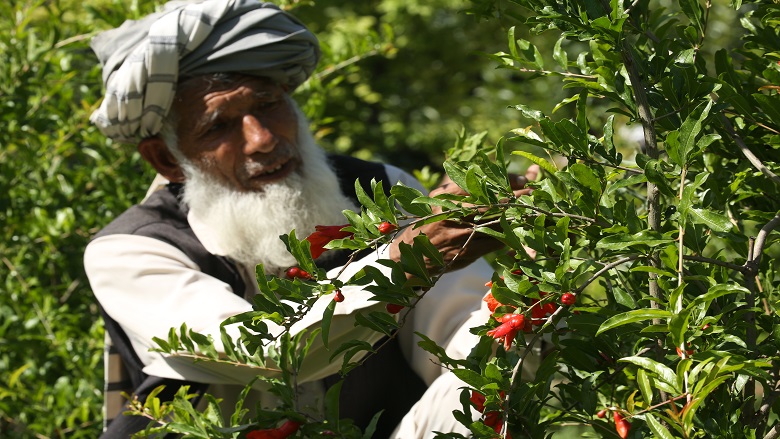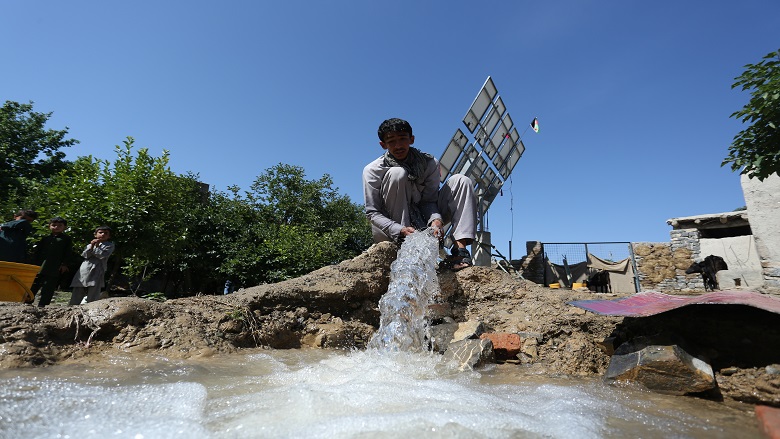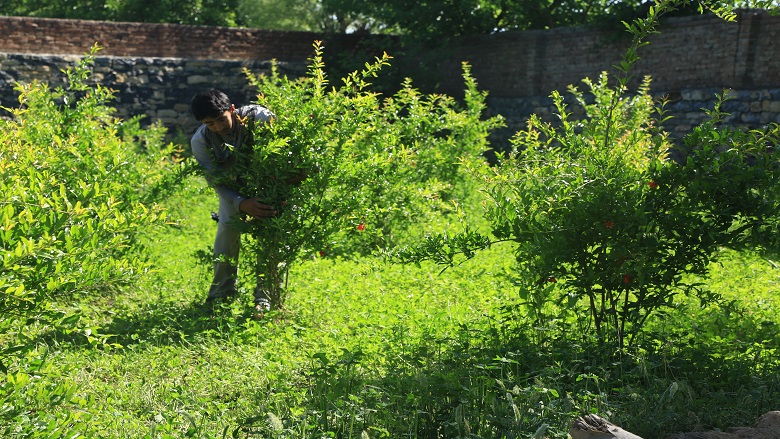KHOST CITY – Haji Noorjan, 65, gently presses a button to turn on his solar water pump. A small green light blinks and a slight noise indicates that the pump is working. A few seconds later, cold water gushes out from the pipe and flows toward his farmland, now lush with grass and a variety of fruit trees.
For more than 45 years, Haji Noorjan has farmed his small plot of land in Chini Kalay village in the province of Khost in southeastern Afghanistan. Here, this father of five mostly grows pomegranates, persimmons, wheat, and vegetables over his 25 jeribs (5 hectares) plot.
Not long ago Noorjan’s village, home to around 150 families - most of whom rely on farming for a living - faced constant water shortages, especially during the summer and autumn months when rain water reserves fell low.
During these times, Noorjan had to rely on a small rickety generator to pump out the well water. However, running a generator was expensive. Fuel costs could touch $1,500, and as his normal yearly earnings were between $4,000 and $6,000, he could not afford to run the generator for long. Then, only half his land would receive the life-giving water, while the rest remained parched and uncultivable. “Unfortunately, the cost of fuel was too high for us compared to our earnings,” Noorjan recalls.



